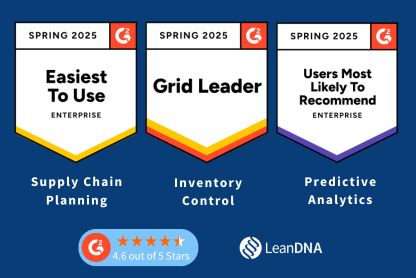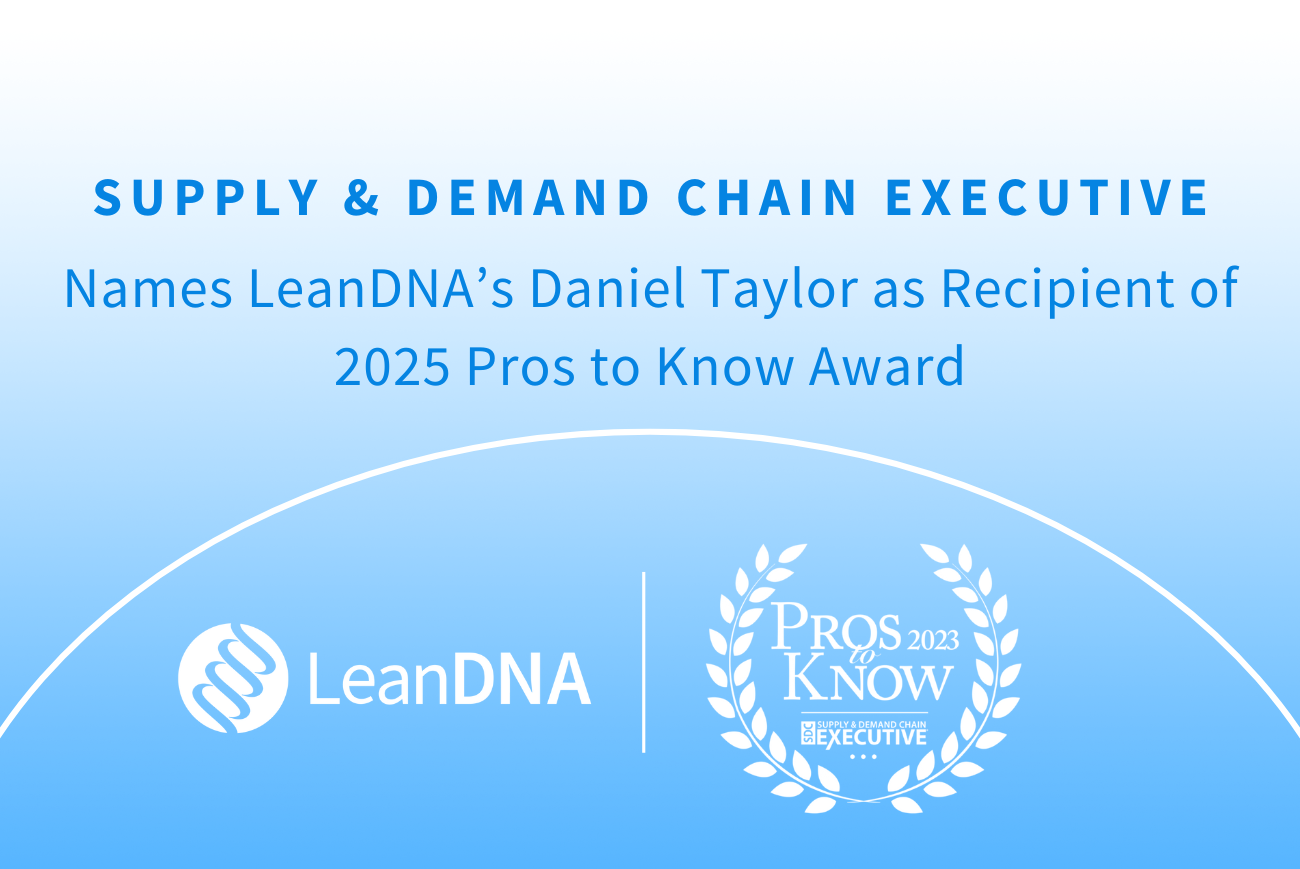A Strategic Guide for Achieving Supply Chain Excellence
Highly effective and competitive manufacturing organizations must continually look for ways to optimize operations and manage inventory effectively. Inventory planning extends beyond basic oversight of inputs and outputs for executives and key decision-makers. Instead, manufacturers must create more efficient workflows by streamlining processes while synchronizing data across multiple systems for supply chain optimization.
A thorough understanding of inventory planning methods, coupled with real-time tracking, empowers manufacturers and enables them to accurately forecast, strategize, and respond to market demands. This involves implementing data-driven solutions designed to offer visibility and efficiency throughout the inventory lifecycle.
While some supply chain management solutions have historically been more helpful than manually-driven approaches, the status quo is no longer enough in today's hyper-competitive global marketplace. What is needed is an approach that simplifies work processes and effectively aligns an organization's daily work with its goals.
The Importance of Inventory Planning
Inventory management is essential to an organization's strategic supply chain operation. It involves making decisions regarding the quantity and timing of inventory to align with production schedules and customer requirements. This vital process ensures optimal resource allocation, minimizes waste and enhances profitability. For those with supply chain and inventory oversight, developing a strategy for managing inventory goes beyond monitoring stock levels; it encompasses driving the company toward success.
Strategic Importance
Efficient management of inventories helps companies avoid the expenses associated with surplus inventory, such as storage costs, write-offs, and insurance premiums. In addition, it prevents revenue loss resulting from shortages and missed on-time delivery.
Establishing an inventory management strategy ensures reliable product delivery, increased customer trust, and the likelihood of repeat purchases. These outcomes must be strategically important to every organization, especially manufacturers, where every achievable advantage must be maximized.
Challenges of Inventory Management
Addressing inventory management challenges requires a thorough understanding of the market, along with an approach to predicting demand. Handling issues such as overstocking, understocking, and obsolete inventory strains financial reserves and damages customer trust.
Nonetheless, businesses can utilize manufacturing inventory management systems and planning techniques. This enables them to forecast market shifts, adjust to changing consumer preferences, and mitigate risks linked to inventory fluctuations.
Common Inventory Management Approaches
The Just-in-Time (JIT) inventory
A Just in Time (JIT) inventory management system involves using inventory as it's needed based on customer demand. This approach maximizes manufacturing processes and reduces waste, as finished goods are not produced until customers place an order.
Implementation of a JIT inventory method requires developing partnerships with suppliers who can quickly and consistently deliver inventory at affordable prices. It also involves accurately tracking inventory and knowing when new raw materials are needed. By incorporating this system, companies can better forecast inventory needs by aligning production closely with customer demands to mitigate stocking excesses or shortages.
While a JIT approach offers many advantages, there are risks involved. By relying on razor-thin delivery schedules and the availability of raw materials, companies must leverage real-time data to ensure a JIT approach will not rely on inaccurate forecasting and last-minute disruptions to the supply chain.
The Perpetual Inventory Model
The perpetual inventory model tracks stock levels in real-time, offering valuable insights into inventory status throughout the supply chain. This model relies heavily on technologies like Radio Frequency Identification (RFID) and cloud-based inventory systems to maintain accurate and up-to-date records of inventory transactions.
Automating the tracking process allows businesses to confirm that their system's inventory records are accurate and that necessary stock is available.
The benefits of employing a perpetual inventory model are real, but there are risks associated with this approach. The initial setup cost of this model can be high due to the necessary investment in technology and employee training. Additionally, glitches or data entry errors could lead to discrepancies impacting inventory management efficiency.
The Work-in-Progress (WIP) model
The Work in Progress (WIP) offers production efficiency and smooth operational flow while analyzing costs based on labor, raw materials, and overhead for products still in the production phase. Effective WIP inventory management can ensure that resources are used optimally, preventing shortages and excesses in the production line.
Optimal resource use is an essential outcome for any manufacturer, but the WIP approach can also result in increased costs and longer production times. A WIP model can also hinder cash flow, especially if the value of materials in production is significantly high.
Challenges associated with a WIP model can act against an organization looking to operate lean production processes.
Material Requirements Planning (MRP)
Material Requirements Planning (MRP) is a production and inventory management approach. This approach helps companies manage their operation by assessing inventory on hand, identifying what needs to be ordered, and then scheduling production or purchasing additional materials as needed.
The core functionalities of MRP include the Master Production Schedule (MPS) and the Bill of Materials (BOM). The MPS connects customer demand with current manufacturing capacity, primarily driving what to produce and when. The BOM encompasses the steps and items needed to create a finished product.
An MRP approach can benefit companies by helping maintain low inventory levels and ensure maximum capacity use. The disadvantages of using an MPR approach include too much reliance on precise input information, which can result in delays and insufficient tracking when errors are introduced into the system (especially when it is highly reliant on manual entries).
Integrating Disparate Models for Optimal Performance
The LeanDNA approach is the best for accurate, effective supply chain management. It enables the alignment and integration of multiple approaches into a tailored strategy that addresses the shortcomings and disadvantages inherent in each method.
By using LeanDNA's analytics and AI technology through an integrated approach, companies can better position themselves to:
- Optimize Inventory Levels: LeanDNA's platform maintains a balance between JIT principles and an inventory system's comprehensive visibility. This equilibrium ensures that manufacturers maintain the necessary inventory levels while reducing waste and staying responsive to market demands.
- Improve Supply Chain Resilience: LeanDNA helps manufacturers anticipate supply chain disruptions through predictive analytics, allowing for inventory strategy adjustments. This capability is critical for incorporating JIT practices without exposing manufacturers to unnecessary risks.
- Enhance Production Planning: By integrating aspects of WIP and MRP models, LeanDNA facilitates flexible and more accurate production planning. The platform's insights identify bottlenecks and inefficiencies, allowing for real-time adjustments to production schedules and inventory management practices.
- Guide Strategic Decision Making: Through its integrated platform, LeanDNA offers a single source of truth for inventory and production data, empowering businesses to make informed strategic decisions that better align with their organization's business goals.
Traditional inventory management frameworks have their merits. Relying on them in isolation can impede inventory and production management.
LeanDNA's platform addresses these challenges by combining the advantages of multiple inventory management methods and offering a solution that boosts productivity, minimizes inefficiencies, and strengthens supply chain flexibility. For manufacturers seeking to successfully maneuver through the intricacies of an inventory control system for manufacturing, LeanDNA offers a powerful and effective solution.
Request a demo today to see how LeanDNA can streamline and integrate your supply chain.



